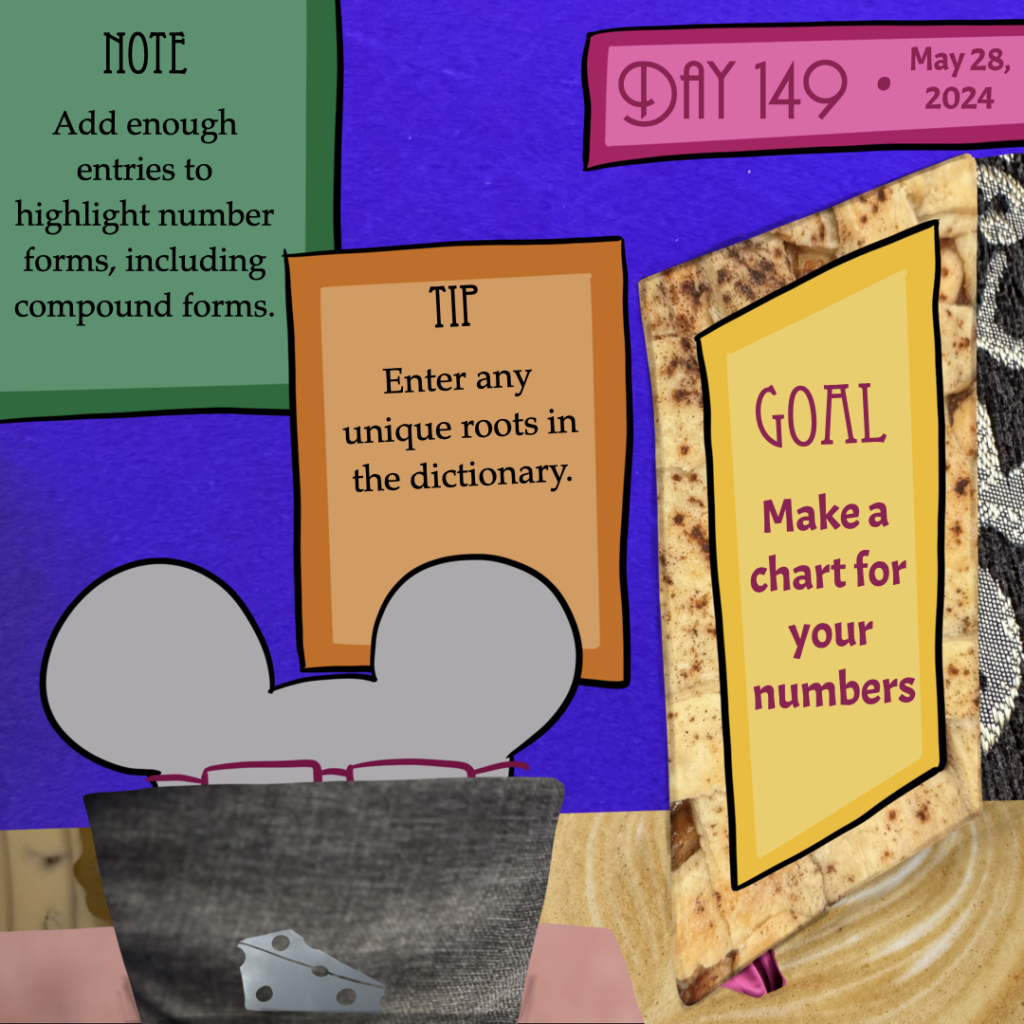
Goal: Make a chart for your numbers
Note: Add enough entries to highlight number forms, including compound forms.
Tip: Enter any unique roots in the dictionary.
Work focus: Solidify/Write/Share
Expand your number section in your language document by making a table/chart for your numbers. Add enough entries to highlight all your number forms, including a sampling of compound forms to show how they come together. For instance, in a base-10 system, I would include 0-10 and then a smattering of numbers beyond that, such as 11, 12,13, 19, 20, 21, 30, 40, 50, 97, 100, 101, 102, 110.
What specific numbers need to be included depend on what forms are predictable and which are irregular. It’s best to include the irregular forms so you remember them but then also include enough regular forms that you could use the information to predict how all the other numbers are created. You may need to create separate cardinal/ordinal charts, depending on how your system works.
Enter the unique number words in the dictionary (the basic roots). You may also choose to enter more complex number forms in the dictionary, such as compounded forms, though it will get redundant for more predictable forms, and you will need to decide how far to take those entries.
